
Back when I was Batman
“Are you a lawyer?”
I got that question a lot when I was Batman. That was my daughter Lydia’s way of describing my work with Friends of Justice. It started in Tulia, Texas where 47 residents were indicted on the uncorroborated word of a corrupt narcotics agent.
Then we traveled to Church Point, Louisiana, where a housewife and three of her sons were falsely accused of running a crack ring out of their tiny bungalow.
Then it was Jena, Louisiana, where racial tension over nooses in a schoolyard morphed into attempted murder charges against six high school students.
In every instance we helped the local community tell their own story, reached out to journalists and attorneys, coordinated with more conventional activist organizations and, after months or years of work innocent defendants would leave the courtroom as free people.
Our remarkable string of successes came to a screeching halt in Winona, Mississippi. “This case has gone to trial five times,” an attorney told me, “and every time the juries deadlock along racial lines or the Mississippi Supreme Court reverses the conviction. Winona has been in an uproar over this case since four people were shot, execution style, in a furniture store back in 1996.” [If you want the details, you can find a legal timeline here.]
In light of Foster
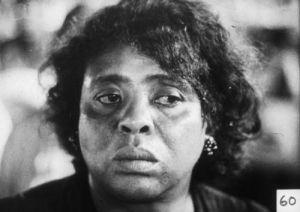 Fannie Lou Hamer
Fannie Lou HamerGoogle “Winona Mississippi”, and the “history” section will tell you three things: Winona was the place where Fannie Lou Hamer and several other civil rights activists were beaten half to death in 1963. Winona is the place where Martin Luther King was attacked by a razor-wielding barber in 1966. And Winona is the place where Curtis Flowers killed four innocent people in cold blood in 1996.
Read a standard newspaper story or a summary of the case prepared for an appeals court and you will get the same litany of facts. Eye witnesses have testified under oath that they saw Curtis sitting on the hood of the car from which the murder weapon was stolen; walking to the furniture store where the murders took place; standing outside the store half an hour after the crime was committed; and even fleeing the scene of the crime.
But if the case is so compelling, why has Doug Evans, the district attorney who has prosecuted Curtis Flowers six times for the same crime, worked so hard to keep African-American residents off the jury? And in the only trial with a significant non-white presence on the jury, why did all five black jurors vote to acquit while all seven white jurors were eager to convict?
The questions aren’t going away. In late June, the Supreme Court of the United States sent the case back to Mississippi with the demand that the jury selection process in trial six be reexamined in light of Foster v. Chapman.
Timothy Foster was convicted by an all-white jury in 1987. Prosecutors highlighted the names of potential African American jurors, circled the word “black” on questionnaires, and they identified those who would be the least objectionable if “it comes down to having to pick one of the black jurors.”
The Supreme Court of Georgia examined these facts and ruled that no attempt had been made to keep black residents off Mr. Foster’s jury. The case went to the federal court where every justice save one voted to vacate the conviction and give the defendant a new trial (you guessed it, the holdout was Clarence Thomas).
A month later, the Supreme Court selected three notorious cases in Alabama, Mississippi and Louisiana where black jurors may also have been targeted. Curtis Flowers was one of these cases. The federal court wants Mississippi to re-examine the jury selection process “in light of Foster”.
Why was the Flowers case one of only three singled out for special attention? The crumbling credibility of key witnesses has a lot to do with it (more on that anon). But this case has always made jurists uneasy. Curtis Flowers is the only capital defendant to stand trial six times for the same crime and the case has become a symbol of racial bias. For instance, the New York Times highlighted the Mississippi defendant in an article on how determined prosecutors can be to keep black residents off juries.
It all points to him
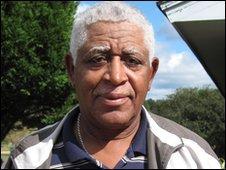 James Bibbs
James BibbsThe pattern is well established: predominantly white juries convict Flowers after little deliberation while racially diverse juries deadlock along racial lines. The jury in trial five fell somewhere in between these extremes. The jury had two black jurors and one of them was named foreman. In an article in the Jackson Clarion-Ledger, Orman Knox described how the jury wrangled over the case for almost two weeks with neither side giving ground.
And the female jurors. They were very conscious of Flowers’ mother being there. And they agonized over the decision that they had to make. They did. And all these ladies were white. So, at this point, it just wasn’t a black and white thing. It really wasn’t. I can’t speak so much for the men. Because they pretty much had their minds made up. But it was mostly the women that went to work in there.
In the end, only James Bibbs, a retired school teacher and military veteran, remained on Flowers’ side. When Knox informed the judge that the jury couldn’t reach a unanimous verdict, Mr. Bibbs was handcuffed, hauled in front of the judge and charged with perjury. Eventually, Judge Joey Loper and district attorney Doug Evans were recused from the Bibbs case and the Mississippi Attorney General’s office dropped the case like a hard rock.
Jury foreman Knox remembers the tension that gripped both the courtroom and the jury room.
After it was declared a mistrial, most of us had an emotional breakdown. It just hit us, and we were crying like babies. I took these people through talking about this, looking at bloody pictures — and especially those women who were looking at that boy’s mother every day. There wasn’t a day during deliberation that they didn’t mention, “I could not be in her seat right now.” And they did everything they could to figure out a way to free that fella.
Knox finally decided that Flowers was guilty for two reasons. First, he didn’t testify in his own defense. Secondly, although the evidence is circumstantial, “it all points to him.” All the same, Knox didn’t feel comfortable with the death penalty. In a case this ambiguous a capital sentence seemed too final.
An open-shut deal?
Early in my investigation of the Flowers case, I made a fact-finding trip to Winona accompanied by a retired Dallas trial lawyer who was serving on the Friends of Justice board at the time. Before arriving in Winona, we headed due east on Interstate 20 to visit a retired judge who lived in a lake cottage near Meridian. Back in the civil rights period, a cross had been burned on the judge’s front lawn after he forced the integration of the local school system.
“I’ve been looking into this Flowers case,” the judge told us. “I called just about everybody I know and they tell me it’s an open-shut deal. Witnesses saw him on the way to the crime, at the murder scene, leaving his house, you name it.”
My lawyer friend was unsettled by this assessment. By the time we arrived in Winona the next morning, he was wondering why he had agreed to accompany me to a woebegone Mississippi town on a futile expedition.
We dropped in on the editor of the local newspaper and she assured us that all the public officials involved in the prosecution of the Flowers case were fine, trustworthy people. As soon as we were alone, the lawyer started upbraiding me for my naiveté. “I’ve been up to my elbows in the law longer than you’ve been alive,” he told me, “so I don’t know why you can’t trust my judgment on this. The man is guilty.”
“Why don’t we swing down to the county jail in Vaiden and see if we can visit with Curtis?” I replied. I knew jail officials wouldn’t let me see Flowers, but I was hoping they would make an exception for a distinguished attorney driving a high-end Mercedes. I was right.
“There’s no point in me talking to him,” the lawyer told me, “but just to make you happy, I’ll do it.”
Half an hour later he was back in the car. “That man is innocent!” he declared, as if I had been arguing otherwise. “There’s no way somebody like Curtis Flowers could casually slaughter four people in cold blood and then lie about it. He doesn’t have it in him.”
This response reminded me of an elderly white gentleman who had worked as a prison guard at the county lockup in Vaiden for years.
“When Curtis Flowers says he didn’t kill those people, I believe him,” the man told me. “Lots of these guys claim they’re innocent, but sooner or later they give themselves away. Not Curtis. If people could see him leading the singing at our worship services, with that face shining like an angel, they’d have to rethink this whole story. I’ve met a lot of folks, good and bad, in my time and Curtis Flowers is the finest young man who ever put on a pair of pants.”
I’m not a lawyer, and I’m not a journalist. By training and inclination I am an historian and a theologian, and both disciplines shape the way I see the Curtis Flowers case.
The past is never dead
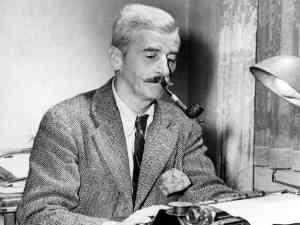 William Faulkner
William Faulkner“The past is never dead,” William Faulkner wrote, “It’s not even past.” In Faulkner’s Mississippi that isn’t just a clever phrase.
When I put on my historian hat I wonder how much Winona, Mississippi changed between 1963 (the year Fannie Lou Hamer and her friends were savagely beaten for demanding service in a white’s only restaurant) and 1996, the year Curtis Flowers came under suspicion for the Tardy murders (as they have come to be known).
When the men accused of forcing two black inmates to beat Ms. Hamer went to federal trial in 1963, the federal judge praised the defendants from the bench and was overheard during a break ranting loudly about “these niggers”. The men were acquitted by an all-white, all-male jury (the only kind allowed in those days).
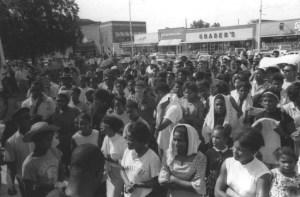 Days before Martin Luther King Jr. was assaulted by a racist barber in Winona, he had participated in a series of protests in Grenada, Mississippi. Every night, for weeks on end, hundreds of African Americans protesting Granada’s segregated school system marched to the city square where they were confronted by a white mob of equal size. Here’s an eye witness report:
Days before Martin Luther King Jr. was assaulted by a racist barber in Winona, he had participated in a series of protests in Grenada, Mississippi. Every night, for weeks on end, hundreds of African Americans protesting Granada’s segregated school system marched to the city square where they were confronted by a white mob of equal size. Here’s an eye witness report:
Under a bombardment of cherry bombs, rocks, and bottles we manage to reach the north side of the green. White men charge into us, beating people with pipes and sticks. Knowing we will be charged with felony assault if we fight back, we maintain nonviolent discipline. But we cannot hold our ground, and are forced to retreat. There are about 50 state troopers on either side of the whites, they are waiting to bust us if we hit back, but they do nothing to halt the white attackers. We fall back to the north side of the square. The attacks continue. One of the cops throws a tear gas bomb into our line.
The situation was further inflamed when 450 black school children attempted to enroll in two white Granada schools. Walking to class in twos and threes, the children were attacked by white mobs organized by the local KKK wielding clubs, bicycle chains, bull whips and pipes. Dozens were hospitalized.
In 1970, the public schools of Mississippi were integrated by the US Supreme Court and private “segregation academies” sprang up all over the state. This is the world Doug Evans, Curtis Flowers’ prosecutor, was raised in. Mississippi didn’t give up all-white juries and segregated classrooms by choice. Behavior can be changed by legislative fiat; hearts and minds yield only to love.
Doug Evans and the ghosts of Mississippi
In the mid-1980s, an arch-segregationist named Robert (“Tut”) Patterson organized the Council of Conservative Citizens from mailings lists left over from the white citizens’ councils Patterson had sponsored in the civil rights era. The group’s ideology was inspired by Sam Francis, a Tennessee columnist with the Washington Times who came of age in the civil rights era and never forgave white America for selling its birthright.
 Sam Francis (second from right, middle row) with Council of Conservative Citizens leaders
Sam Francis (second from right, middle row) with Council of Conservative Citizens leadersFrancis wanted to inspire a white racial consciousness rooted in the realization “that racial-biological endowments are necessary to certain kinds of human behavior (e.g., the political and civic behavior appropriate to stable self-government, the work habits and lifestyles appropriate to a dynamic economy; the intellectual behavior that is necessary for science and scholarship, et cetera). Because “these endowments are largely unique to whites,” Francis argued, “the behavior they make possible cannot be replicated by most non-whites.”
Francis was fired by the hard right Washington Times in 1995 when he became too candid about his views on race. Freed from the fetters of the mainstream journalism, he published his distinctive brand of highbrow racism in a white supremacist journal called American Renaissance and became editor of the Council of Conservative Citizens’ publication The Citizens Informer.
Francis is widely acknowledged as the intellectual father of the “alt right,” a loose affiliation of white nationalists who regard America as a “European” (that is, “white”) nation.
It shouldn’t surprise you to learn that Doug Evans, the district attorney who has been prosecuting the Curtis Flowers case since 1997, spoke at events sponsored by the Council of Conservative Citizens and was once featured on the same program as Tut Patterson.
This hardly makes Evans unusual, of course. Trent Lott, the most influential Republican to come out of Mississippi, was a regular at CCC events and Lydia Chassaniol, the house representative for the Winona region, is a proud member of the organization.
I am not engaging in guilt-by-association smear tactics. It would have been extremely difficult for a young man like Doug Evans to escape the tentacles of racist ideology. The tenets of white supremacy were so bred-in-the-bone ubiquitous in the Mississippi of Evans’ youth that only a handful of public figures, statewide, challenged it publically.
In a 1985 interview, Hodding Carter III, the son of a racially moderate Mississippi newspaper publisher, described how Tut Patterson’s citizens’ councils enforced uniformity:
One way was simply to make it be seen as another necessary club for inclusion in the white family. That if you were going to be considered a responsible leader in your community you had to join it. Another was by suggesting that those who were outside it, if you weren’t with us, were against us. That a moderate was someone, who would only let a little sewage under the door as they said. That those who weren’t ready to stand up and be organized were ready to lie down and let the integrationist take over.
Men like Tut Patterson and Sam Francis saw the Council of Conservative Citizens to inculcate a new generation into the “never-in-a-thousand-years” dogma that prevailed in the 1950s and 60s. They wanted white people to embrace their biological and cultural superiority so they would stop letting non-white push them around. In an article published in American Renaissance, Francis argued that merely being an American citizen does not give you “the right to vote, or the right to hold political office, let alone social and economic equality, nor the ‘right’ to attend the same schools, to serve on juries, to marry across racial lines, to serve in the armed forces, to eat at lunch counters, to ride on buses, to buy a house or rent a room or hold a job, to receive welfare, to be admitted to colleges and universities, to take academic degrees or to be promoted.”
Francis argued, quite persuasively, that his doctrine of white supremacy was mainstream prior World War II and was destined to regain its normative status. Donald Trump’s successful primary run suggests that Francis, who died in 2005, might have been on to something.
Tut Patterson, Sam Francis, the Council of Conservative Citizens, and the hipster fascism of the alt-right all portray African Americans as an inferior and resentful race genetically predisposed to violence. If Doug Evans ingested this worldview with his mother’s milk it makes sense that a mild-mannered gospel singer like Curtis Flowers looks like a homicidal monster or we can understand why Evans fights so hard to keep African Americans off the jury.
Ye have done it unto me
The questions raised by the Flowers case are as much theological as historical. Jesus was a destroyer of walls: the walls separating Jews and Gentiles, slaves and masters, white people and non-white people, the wealthy and the poor, males and females, and, most controversially, the good and the bad. He was out to abolish every form of us-them distinction. Save one. The only line Jesus drew was between hurters and healers.

Jesus died on a Roman cross because neither preachers nor princes could tolerate a prophetic perspective that undermined their authority and control. But getting rid of Jesus wasn’t easy. Legal hurdles stood in the way of summary execution. Credible witnesses were indispensable and often well paid for their services. Judas took in thirty pieces of silver for betraying his master; approximately $15,000 in today’s money.
In Luke’s gospel, Jesus told a parable in which the king’s vineyard is commandeered by rebels who would butcher the king’s son before they’d surrender control. “The scribes and chief priests tried to lay hands on him at that very hour,” Luke tells us, “but they feared the people; for they perceived that he had told this parable against them. So they watched him, and sent spies, who pretended to be sincere, that they might take hold of what he said, so as to deliver him up to the authority and jurisdiction of the governor.”
When Jesus was arrested, a parade of witnesses was produced to implicate the man from Nazareth in a capital crime. For the preachers the crime was blasphemy; for the Romans it was insurrection. Pontius Pilate bound Jesus over for crucifixion after false witnesses testified that Jesus set himself up as an enemy of Caesar.
The six jury trials Curtis Flowers (and the rest of Winona) have endured recapitulate the legal humiliation of the Christ. In Matthew, Jesus ends his teaching ministry with words that haunt us still:
And the King shall answer and say unto them, Verily I say unto you, Inasmuch as ye have done it unto one of the least of these my brethren, ye have done it unto me. (Matthew 25:40, KJV)
Hours later, as Jesus reclines at table for his final Seder meal, these words sent a chill through the room:
The Son of man goes as it is written of him: but woe unto that man by whom the Son of man is betrayed! It would have been good for that man if he had not been born. (Matthew 26:24, KJV)
Who pulled the trigger? Who paid for the bullets?
If all the witnesses Doug Evans trots out at trial are credible the state has a strong circumstantial case against Curtis Flowers. If.
The Tardy murders (as they are popularly known) were not investigated in any meaningful sense. When four people are executed with a bullet to the back of the head we are almost certainly dealing with an experienced killer will ice water in his veins. Could a single assailant induce four people to stand stock still while, one after another, they are gunned down from pointblank range? No matter how enraged I might become, I couldn’t pull that off. In fact, that kind of killing requires the kind of cool detachment ordinary mortals can’t muster.
But even a psychopathic contract killer would have trouble killing four people, one at a time, while leaving no sign of flight or a struggle.
In the weeks before and after the Tardy murders, within a three-hour drive of Winona, two young black men, Marcus Presley and LaSamuel Gamble, went on a crime and killing spree. Initially satisfied with holding up pawn shops at gun point, they quickly graduated to murder. While Gamble kept his gun trained on the intended victims, Presley did the shooting. We know because their crimes were captured on camera.
Where things went wrong
But Doug Evans and John Johnson (Evans’ chief investigator) never checked to see if crimes similar to the Tardy murders had been committed in the vicinity of Winona (Birmingham is a three-hour drive east on Highway 82). Two hours after the bodies were discovered, Evans had his man. When Roxanne Ballard, Bertha Tardy’s daughter, arrived at the crime scene she made a quick inspection of the furniture store. A check for $80.52 was sitting on her mother’s desk made out to Curtis Flowers.
Instantly, Roxanne knew that Curtis Flowers was the killer.
 The boulevard in front of the Tardy furniture store
The boulevard in front of the Tardy furniture storeCurtis had worked for Bertha Tardy for a few days in late June, but when he inadvertently damaged some riding lawnmower batteries, Bertha told him she was going to have to dock his pay. She gave him forty dollars so he could enjoy the July 4th weekend, but when the holiday was over Curtis never came back to work. At the insistence of his mother, Lola, Curtis finally called in and asked if he still had a job. He didn’t. When he didn’t show and didn’t call Bertha hired Derrick Stewart, a sixteen year-old baseball star, and Robert Golden, a middle aged laborer to take his place.
The bodies of Stewart, Golden, bookkeeper Carmen Rigby and Bertha Tardy were discovered by Sam Harris, a former employee who had been called in to train the new hires.
Since all Roxanne Ballard had to go on was a check with Flowers’ name on it, why was she so sure he was the killer? When you learn that someone you love has been senselessly murdered the first question is “who” and the second question is “why”. We need to make sense of the horror. The check gave Roxanne a name and her grief filled in the blanks.
From that moment on, Curtis Flowers was the only suspect Doug Evans investigated.
Doyle Simpson’s gun
Shortly after securing the crime scene, investigators learned that a part-time employee of the nearby Angelica garment factory had reported that his gun had been stolen from his car the very morning of the crime. Doyle Simpson claimed that he had just had the gun cleaned and had it in his glove compartment when he arrived at work. When he came back to check on it later that morning, he said, someone had broken into his locked glove compartment and taken the weapon.
 Doyle Simpson’s car parked at his mother’s home
Doyle Simpson’s car parked at his mother’s homeFor an hour or two, Doug Evans and John Johnson considered the possibility that Simpson was the shooter, but they quickly abandoned that theory. The semi-employed custodian had worked at the Tardy furniture store but that alone was not suspicious. What motive could a man who lived with his mother have for killing four people in cold blood? It didn’t make sense.
Moreover, Simpson had loudly advertised the theft of his weapon. When he made a multi-stop sandwich run for Angelica employees later in the morning he mentioned the theft to complete strangers. He then called the police and reported the theft.
Why didn’t Doyle make the stolen gun his own little secret? The .38 caliber pistol had been purchased illegally and he initially lied about who sold it to him. Moreover, it was against Angelica’s rules to bring a gun to work and Simpson was suspended for several days because of the infraction.
Evans and Johnson ruled Simpson out as a suspect on the day of the crime. Investigators claim that several Angelica employees supported his alibi (although no official reports were filed to that effect). If their Curtis Flowers theory was on target, and if Simpson’s gun was the murder weapon, Flowers must have stolen the gun that morning. No one has ever explained how Curtis knew the gun would be waiting for him in Simpson’s car.
Interviewed the day of the crime, Katherine Snow, Doyle Simpson’s girlfriend, told investigators she had seen a short, chubby man leaning up against Doyle’s car at 7:30 am just as she arrived for work. Snow stuck to this story when investigators picked her up and drove her to the police station on several occasions. Evans and Johnson knew she had to be lying (Curtis Flowers was slim and five foot ten), so they kept hauling Ms. Snow over the course of a month. By late August everyone in town knew Curtis was the prime suspect and when she was shown a photo array, Snow finally picked him out.
Like Curtis Flowers, Katherine Snow was a gospel singer and had shared the stage with Flowers. She knew what Curtis looked like; so why was she so reluctant to say so?
Did Katherine Snow see anybody leaning against Simpson’s car, or was she just helping her boyfriend deflect suspicion? We will likely never know, but two things are clear: Doyle Simpson wanted the world to know he had a gun in his car the morning of the murders, and he wanted to distance himself from the crime.
My investigations revealed that Simpson and his brother had run afoul of a drug gang in New Orleans, ten years before the Tardy murders. The brothers were working with a major drug ring and the stash of marijuana they were guarding went missing. Doyle’s brother Clyde had his throat cut and bled out in his own home. The hit man then drove Doyle out of town at gun point, tied him to a tree, cut his throat and left him to die. Miraculously, Doyle was able to cut his bonds with a broken piece of glass and crawl to the highway where he was rescued by a trucker.
Confronted by investigators, Doyle said he had purchased the gun from Robert Campbell, his half-brother. When this turned out to be a lie, Doyle answered vaguely that he bought the weapon from a friend named “Ike”. Doyle didn’t know the man’s last name and the state never pursued the matter.
But Robert Campbell, Doyle’s half-brother, believes that whoever placed the murder weapon in Doyle’s hands is connected to the Tardy murders. Moreover, Campbell argues that the folks that paid to have Clyde Simpson murdered in 1986 were behind the murders in Winona in 1996. Is there any truth to this theory? Doug Evans and John Johnson were only interested in leads that pointed to their prime suspect.
Porky Collins, two men and a car
The next witness to step forward on the day of the crime was Porky Collins, a retired Winona resident who said he was driving past Tardy furniture at about 10:00 am. Sam Harris, the elderly man who discovered the bodies, says he arrived at the furniture store around 9:30 and, having encountered the bodies, ran up the street so he could use a phone at the Coast to Coast hardware store to inform the authorities. By the time Porky Collins drove by the store, Mr. Harris was either inside Tardy’s or had just arrived at the hardware store.
Porky Collins says he saw two black men on the boulevard in front of Tardy’s: one standing with his hands on the hood of a brown car and the second with one foot inside the open driver’s door. The two men were engaged in a passionate argument and the man at the front of the car was gesturing wildly with his arms. When Porky made the block so he could get a better look, the two men were on foot, walking in the direction of the furniture store.
Were these men involved in the Tardy murders? If so, why were they hanging around at the crime scene half an hour after the crime? The dramatic encounter Collins witnessed may have been unrelated to the crime and it is even possible that the two men had entered the store as customers, discovered the bodies, and fled in horror. There is no way of knowing.
Evans and Johnson ignored virtually everything that Porky Collins told them and it was over a month before he picked Curtis Flowers out of a photo array. On the first page of six faces, Collins’ finger lingered over the picture of Doyle Simpson and he was asked, “Do you know Doyle Simpson?” On the second page, Porky’s finger gravitated to a photo that was considerably larger than the others. When he showed interest he was asked if he knew Curtis Flowers. Collins knew he had fingered the right man. By late August the whole town knew who the state was after.
If their eyewitness is relevant to the Tardy case, the state should have been looking for two men driving a brown car.
At each trial, Essie Ruth Campbell, Doyle Simpson’s sister has testified that, while working as an aide at the Winona Manor nursing home, she saw Doyle’s car heading west toward McDonald’s between 9:30 and 10:00 am. A few minutes later, she saw him driving east. Doyle’s car is the same color as the vehicle Porky Collins witnessed at the crime scene.
A witness made in heaven
 Curtis Flowers’ Home in 1996
Curtis Flowers’ Home in 1996Inspectors tried to ignore the fact that Collins had the killer pinned to a partner and a car. That’s because Patricia Ann Hallmon, Curtis Flowers’ next door neighbor, contacted police with precisely the testimony they were looking for. Patricia Ann had seen the state’s prime suspect leaving his home just after seven a.m. (just in time, that is, to steal Doyle Simpson’s gun). Curtis returned for a few minutes, she said, and then headed out again (just in time to make the fifteen minute walk to the furniture store).
If Patricia Hallmon was right, there was only one killer, and he had been on foot. So Porky Collin’s car and accomplice were out the window. Porky Collins placed Curtis Flowers at the scene of the crime, but 90% of his testimony had to be ignored.
Using Ms. Hallmon’s timeline, John Johnson walked the route from Flowers’ home to the Angelica garment factory (where the murder weapon had allegedly been stolen) and a second route between Flowers’ home and the crime scene. In one hand, Johnson held a picture of Curtis Flowers; in the other he brandished a flier advertising a $30,000 reward offered to anyone providing testimony that helped the state secure a final conviction.
One witness has testified that John Johnson told her she could buy a good used doublewide mobile home for $30,000. That’s a lot of money. Twice as much as Judas Iscariot was paid for betraying Jesus. Unfortunately, no one ever collected a dime.
It took the better part of a year, but investigators finally assembled a list of men and women willing to testify that they had seen Curtis Flowers on the morning of July 16, 1996. Since most of these people were interviewed over half a year after the event it comes as no surprise that their descriptions of Flowers’ wardrobe range from shorts and a T-shirt to Sunday-go-to-meeting finery.
I have analyzed the enormous problems with several other state witnesses elsewhere, but this brief account must suffice for my present purposes.
Jailhouse snitches
At the first trial, Frederick Veal and Maurice Hawkins testified that they had shared a cell with Curtis Flowers shortly after his arrest in January of 2000. In the course of idle chit-chat, Flowers confessed that he was the killer.
Unfortunately for Doug Evans, Veal and Hawkins recanted their testimony prior to the second trial, admitting that they had invented their story in hopes of claiming the $30,000 reward. “I wanted to get out of jail, and I didn’t have no money,” Veal told attorney Chokwe Lumumba. The two men said they had been placed in a cell with Flowers but he never confessed to the crime.
Asked why they had perjured themselves in open court, Veal said, “Well, I was coerced, and they came to me about the money.” Asked who had coerced him, Veal said “Johnson, Mr. Evans, all of them. I tried to back out when we went to Tupelo [the site of the first trial] to go to court. They said ‘You can’t back out.’ I said, ‘I don’t want to testify.’ So they say, ‘You ain’t got no choice.’”
Then, as he prepared for trial number two, Chokwe Lumumba received an unsolicited letter from Odell Hallmon, Patria Ann’s brother.
“My sister—she the worst child my mother have,” Odell wrote. “She just like me, do anything for money.”
“I am truly sorry, Miss Flowers,” the letter began. “I was locked up in the Carroll County Jail when I had Ann [his sister Patricia] to tell the police she felt like Curtis committed those murders. I was trying to get out of jail.”
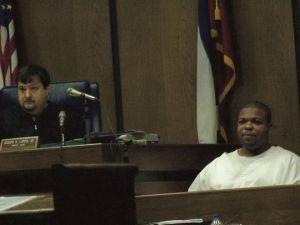 Odell Hallmon testifies at trial 6
Odell Hallmon testifies at trial 6“I had fines to pay off,” Odell explained, “and I couldn’t get the money up. So I tried to get that reward they had by using Ann . . . She know we planned that up while she was coming to see me in the county jail. People done told her if she get on the stand and say she was lying for money, they are going to convict her. So the only thing I can do is tell the judge I pushed her up to it, which I did.”
When Odell Hallmon was released, his only option was to live with an enraged mother and sister. It wasn’t long before he showed up on Doug Evans’ doorstep. Not only had he lied on his sister, Odell was now saying, Curtis had confessed to the murders while the two men were locked up together.
Odell stuck to this testimony through trials two through six. The last time he was on the stand, he informed the jury that he was dying of AIDS and, with his days dwindling down to a precious few, he wanted to get right with his God. That was six years ago.
The fall of the State’s star witnesses
Patricia Ann Hallmon (who also goes by married names Sullivan and Odom), put on a bizarre performance during trial 6 in 2010. Informed that she might be recalled for additional testimony, Patricia exploded, telling the bailiff that she wasn’t going to talk with defense counsel under any circumstances. Judge Joey Loper returned the state’s star witness to the witness stand where she was informed that she had no choice in the matter.
Patricia Hallmon’s nervousness was understandable. At the time of her trial six testimony, she was under federal indictment for income tax fraud (Doug Evans swears he had no idea). Convicted of making bogus deductions totaling nearly $800,000, Hallmon was sentenced to thirty-six months in prison. Federal prosecutors showed how Patricia had invented fake businesses and faux children so her clients could claim generous deductions.
Would Doug Evans have the gall to place his star witness on the stand a seventh time if the verdict in trial six is vacated?
Things were looking up for Odell Hallmon. After conquering death and being released from prison, he moved in with his girlfriend, Marquita Hill in Kilmichael, Mississippi. Then everything went to hell. After living with Marquita for nine months, Odell found himself out on the street. Apparently there were beefs over drug transactions in the mix. Odell solved his problem by gunning down his girlfriend and her mother, Carolyn Ann Sanders.
 Odell Hallmon’s victims
Odell Hallmon’s victimsHallmon then drove to another Kilmichael home where he shot Marcus Brown five times leaving him for dead. Brown survived but is now confined to a wheelchair.
Finally, Hallmon drove to Winona where he murdered Kenneth C. Loggins with a single bullet.
Does this mean that Odell Hallmon should be investigated for the Tardy murders. He certainly fits the psychopathic killer profile. But what would have been the motive?
A verdict in search of an investigation
Robert Johnson, the former police chief of Jackson, Mississippi, has testified that the Tardy murders have never been investigated in the proper sense of the word. The crime looks for all the world like a contract hit perpetrated by at least two gunmen, Johnson says. But Doug Evans’ investigation considered only one theory of the crime.
Contract murders figure prominently on TV cop shows but they have received little academic attention, at least in the United States. An Australian study suggests that most contract hits are tied to domestic disputes rather than organized crime. If you don’t have the emotional fortitude to kill your loved one (and few do) the easy choice is to pay a few hundred or a few thousand dollars to have a professional do the job. Most contract killers are psychopaths who feel no remorse and some derive pleasure from the suffering of others—that’s why they can be cool, methodical and very good at covering their tracks.
Why didn’t Doug Evans investigate the possibility that the Tardy murders were a contract hit in which inconvenient witnesses died along with the primary target? Doug Evans is an elected official, which is one of many reasons why prosecutors should steer clear of murder investigations. The chances of apprehending a professional hitman are small, and a big crime in a small town cries out for redemption. Somebody had to pay, and Doug Evans didn’t want to be that somebody.
The second reason has been the subject of intense debate in Winona but rarely surfaces in the media or in polite conversation. Years before the tragic events of 1996, Tom Tardy divorced the bride of his youth so he could marry Bertha. Tom’s children from his first marriage were never reconciled to this decision and, as is often the case in these matters, they blamed Bertha for the divorce. Does that sound like a sufficient motive for a contract murder? Not to me, but the possibility had to be investigated. It wasn’t.
Failing to solve the Tardy murders was one way to lose an election; appearing to blame the victims of the crime was another.
Carmen Rigby, Bertha Tardy’s business manager, might have been the target of a paid hit. According to persistent rumor, Carmen had just left her husband, Benny. Benny remarried with what some considered indecent haste, but the union was of short duration. One day Benny came home to find that his new bride and her young son had vanished without explanation.
Benny Rigby was never interviewed by the authorities, nor were Tom Tardy’s children from his first marriage. Both parties would have been outraged by the mere suggestion of culpability (which is why I have only recently broached the subject myself). It’s difficult to exaggerate the pain, confusion and horror the events of July 16, 1996 unleashed in this modest Mississippi community. The wounds are deep and are reopened every time the case is back in the news. Families of the victims sit together at every trial and show up at even minor court hearings connected to the case.
The Flowers case will never be resolved until it is transferred from Doug Evans to the Mississippi Attorney General’s office. Every witness must be re-interviewed with amnesty offered to those wishing to alter their testimony. Every possible theory of the case must be examined.
None of this is likely to happen.
The Court has always been for sale, but they buyers have changed
The US Supreme Court has sent the Flowers case back to the Mississippi Supreme Court with instructions to re-examine the voir dire (or jury selection) phase “in light of the Foster case”. And the Mississippi Supreme Court has already reversed this case on numerous occasions. But times have changed.
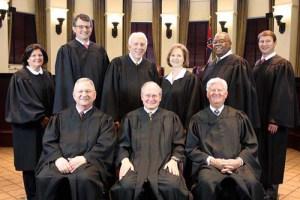 The Mississippi Supreme Court
The Mississippi Supreme CourtLike Doug Evans, Supreme Court justices in Mississippi are elected officials. You get the kind of justice, and the kind of justices, you can pay for. The election process has always been fueled by enormous contributions from a handful of motivated contributors. Until recently, trial attorneys helped elect moderate, pro-litigant justices by flooding the election process with the money produced by the generous civil settlements for which Mississippi had become famous. The Supreme Court justices that reversed Flowers verdicts were on the liberal side (at least by Mississippi standards).
But in recent years, “tort reform” has made it harder to win civil suits and placed caps on settlement amounts. Nature abhors a vacuum, and the gun lobby and the business community now control the financing of Supreme Court elections. These folks like conservative justices who tend to side with the corporate community.
There are still moderates on the Mississippi Supreme Court, but the balance of power has shifted.
The names of the newest crop of Mississippi Supreme Court justices will be familiar to students of civil rights history. Josiah “Dennis” Coleman is the grandson of James P. Coleman, the Mississippi Governor who created the Mississippi Sovereignty Commission in 1956 to spy on civil rights activists and frustrate attempts to register African Americans.
William Waller, Jr., is the son of Mississippi Governor Bill Waller (1972-1976). In 1964, Bill Waller made a failed attempt to prosecute Myron De La Beckwith, the man who murdered civil rights icon, Medgar Evers. In a desperate attempt to seat a jury of white Mississippi males willing to give the prosecution a fair shake, Waller posed a simple question to each prospective juror: “Is it a crime to kill a nigger in Mississippi?”
Justices Waller and Coleman see no reason to revisit the Flowers case.
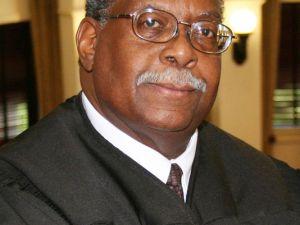 Leslie King
Leslie KingLeslie King, the only African-American on the Supreme Court of Mississippi, is appalled by the court’s recent refusal to vacate the verdict in the sixth trial of Curtis Flowers. “The statements that resulted in this Court reversing Flowers’ conviction and death sentence in Flowers II are notably similar to the statements raised in today’s case,” King wrote in dissent. “While this repetition of prosecutorial misconduct is alarming, the Majority’s approval of the same is even more startling.”
In a dissent joined by two fellow justices, King argued that Doug Evans was just as determined to weed out black jurors in 2010 as he had been in previous trials. “In the retrial of a case under these circumstances, where the same issues are confronted” King wrote, “the trial court is obligated to look beyond the surface. The trial court failed in that obligation.”
Of course that was before the state’s star witnesses were convicted of tax fraud and mass murder.
Still, most observers are betting that the Mississippi Supreme Court will once again fail in its obligation to look beneath the surface. When virtually every state witness lacks even a shred of credibility, does it make sense to argue that their testimony adds up to a solid circumstantial case?
Any thorough and dispassionate analysis of the “evidence” in this case leads to a simple conclusion: Curtis Flowers is the victim of a crude but effective frame job perpetrated by an elected official whose perspective on racial justice hasn’t changed since the turbulent 1960s.
God alone can stop this madness. And who knows, he just might.
